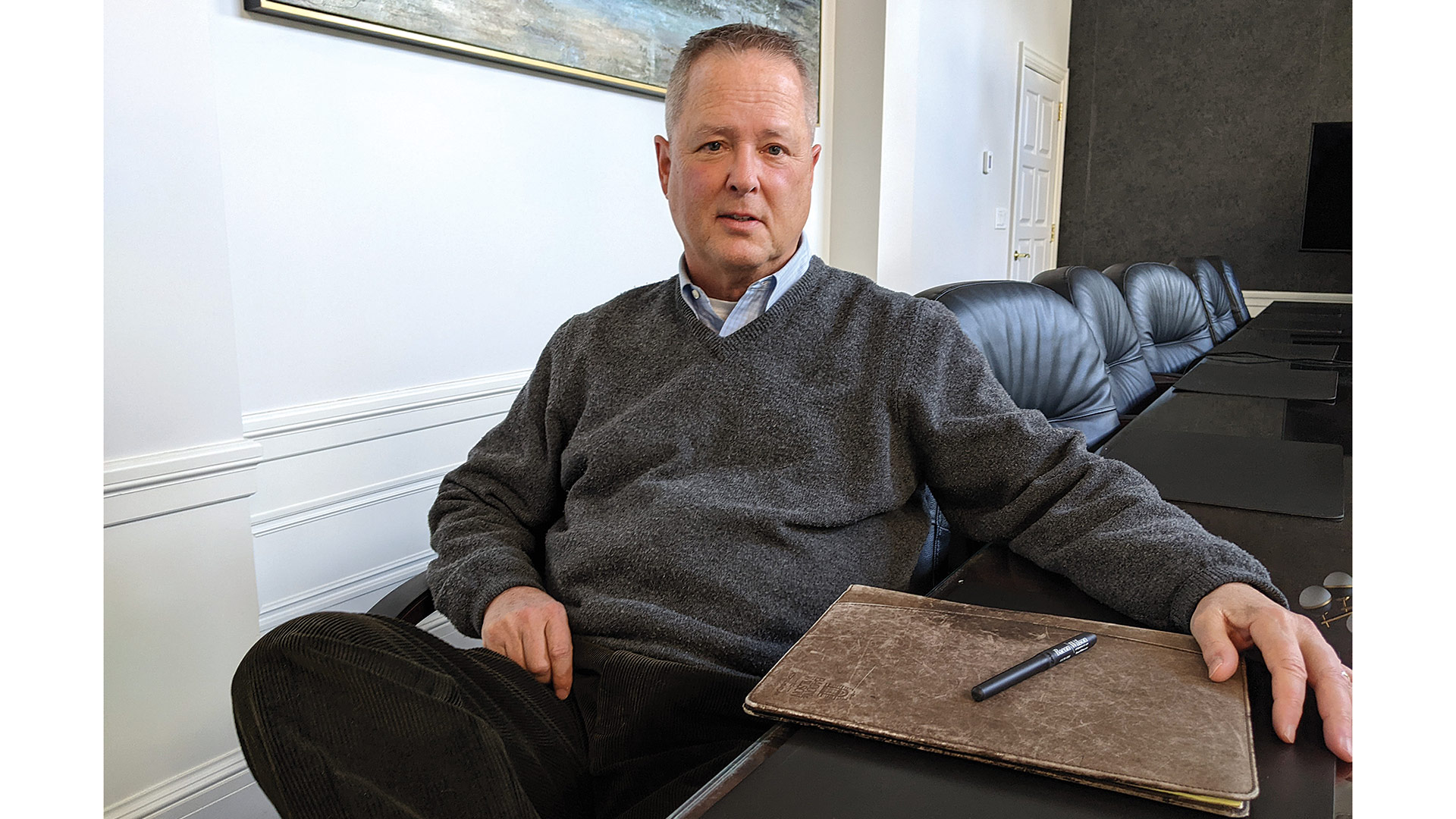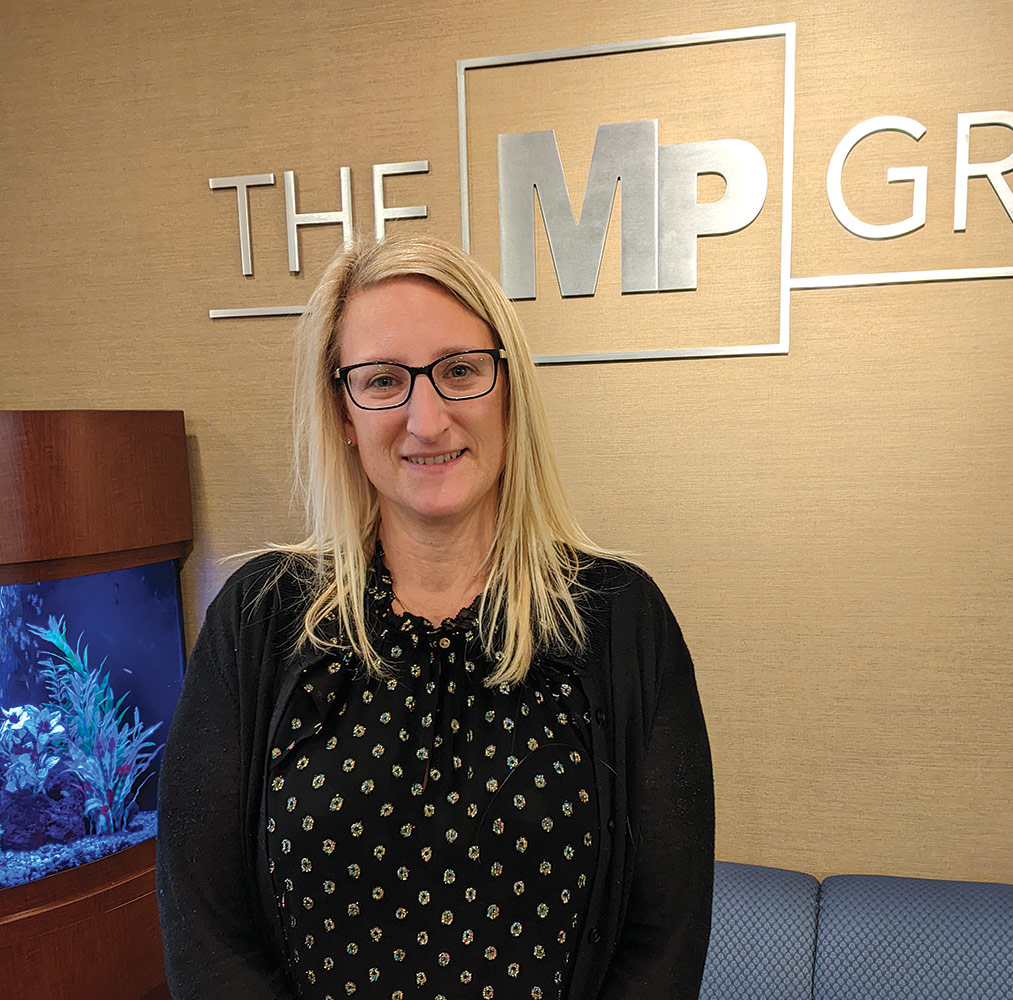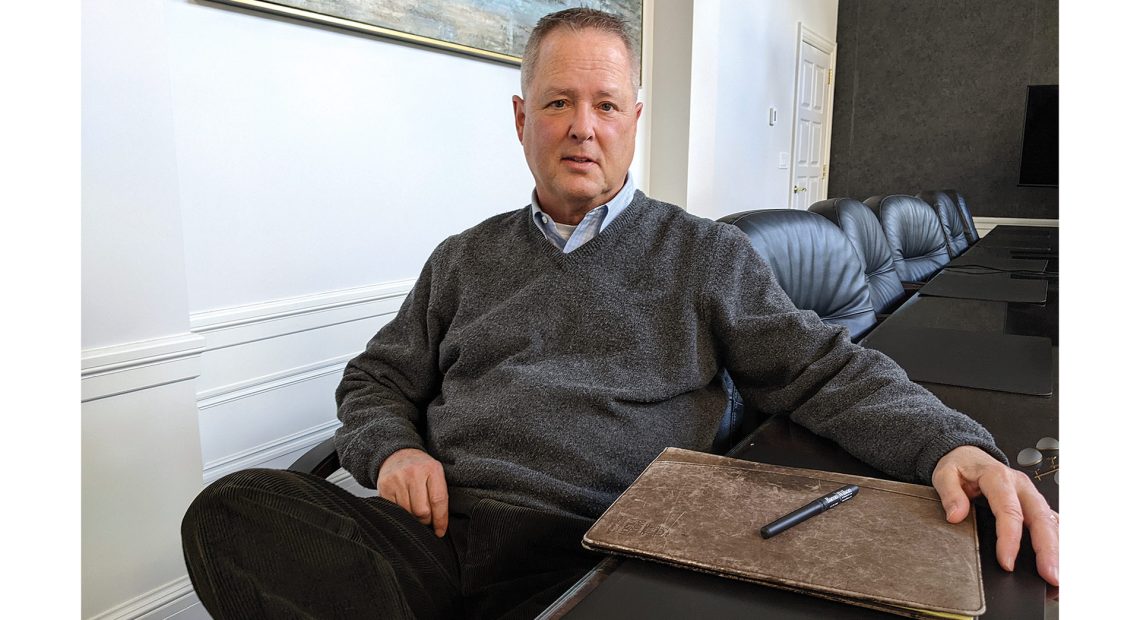Dressing Down

Ken Albano says businesses need to balance what works for employees with a certain level of professionalism.
If it wasn’t clear before, you know office-attire norms are shifting when the rules for dress-down Friday have to change.
That’s exactly what happened at MP CPAs in Springfield, one of many companies with a rule that, with a donation to a charitable cause (in this case, a $5 donation that the company matches), employees may wear jeans and other attire typically deemed too casual for the office.
“But we changed it slightly because of what ended up happening,” said Melissa English, senior tax manager. Specifically, “COVID came, and our dress-code policy went out the window.”
With jeans and other casual attire now acceptable all week, she explained, “for an incentive for people who want to contribute to charity, Fridays are now our ‘wear what you want’ day. Anything goes. There’s no dress-code policy on Fridays if you pay in.”
Flip flops on Friday? Sure, go for it.
“I started 21 years ago with the firm, and no matter what, whether you were in the office, with a client, whatever, you made sure you were professionally dressed,” English told BusinessWest. “Then, over time, it gradually did loosen up a little bit. It became a little more … business casual. When you went to a client, you still had to dress up. But in the office, you were allowed to have professional pants on but maybe not necessarily a suit and tie, just a button-down shirt, stuff like that.”
“I want to be comfortable when I’m working, and I think a lot of people feel that way. I think you’re more productive if you’re comfortable throughout the day. So I do think it was already moving toward business casual, but COVID definitely pushed it.”
If anything, the pandemic, and especially the summer of 2020, only accelerated that trend, she went on. As one of the first businesses back in Monarch Place, at a time when the downtown towers seemed nearly empty, it was easy to relax the dress code.
“At that point, it was wear whatever you wanted. You could show up in your pajamas; it didn’t matter,” she joked. “It was very casual. We had no dress-code policy whatsoever; we were wearing shorts all summer.”
What happened next — and this was something BusinessWest heard multiple times for this story — was that employees liked dressing down. And employers listened.
“Even after COVID, to try to get back to professional dress, I don’t think it’s going to happen,” English said. “For me personally, I want to be comfortable when I’m working, and I think a lot of people feel that way. I think you’re more productive if you’re comfortable throughout the day. So I do think it was already moving toward business casual, but COVID definitely pushed it.

Melissa English says workers have shown they can be both comfortable and productive at work.
“I do know a lot of businesses feel the same way,” she added. “A lot of the businesses we go to now are casual to business casual. You don’t see many people wearing suits and ties anymore. I think it’s more acceptable now, especially after COVID.”
As a law firm with five offices, Bacon Wilson’s workplace policies are generally driven by the main office in Springfield, Managing Shareholder Ken Albano said.
“We have a policy that’s been tweaked over the years. Now, business casual is acceptable throughout the firm. You don’t have to wear a sport coat. Corduroys, a gray sweater, and a button-down shirt — that’s my dress today. That’s deemed acceptable; I’d call that country casual or business casual. Wearing a sport coat every day is no longer required.
“That said, we’ve got old-school people here who just can’t change,” he went on. “They come to work in a suit every day. Even given the opportunity to loosen up their attire, they stick to it, especially some of the older guys in the Estate Planning department who meet clients daily and like to wear a suit and tie when they sit down with clients.”
He agreed that employees returning from long stretches of remote work, where they could get their job done in pajamas some days, grew to enjoy the comfort of casual dress, and the firm’s policy preserves elements of that while stressing appropriate wear.
“For a law firm of this size,” Albano said, “we try to be as flexible as we can without taking it too far away from the professional setting we’re trying to establish for our clients.”
Loosening Up
Casual dress has long been the norm in technology workplaces, and that revolution eventually spread to other, more traditionally formal workplaces in fields like law, accounting, and insurance. The shift toward a more casual dress code reflects, in one sense, a desire by employees to embrace comfort and individuality — and, over the past couple of years, a recognition by employers that comfortable employees are happier and, in many cases, just as productive as before, if not moreso.
Sue Cicco
“As we have instituted our new hybrid workplace approach, which balances in-person collaboration with personal flexibility to best meet the needs of our employees and customers, we’ve seen this level of comfort continue, and I believe it’s here to stay.”
Sue Cicco, head of Human Resources & Employee Experience at MassMutual in Springfield, told BusinessWest that the firm has continually evolved its culture to reflect the changing world, prioritizing diversity, equity, and inclusion; offering a flexible workplace; and, yes, moving away from exhaustive dress codes.
“In 2015, we instituted a two-word dress code: ‘dress appropriately,’” she explained. “This simplified guidance was rolled out as the company sought to reflect the more innovative and open workplace that was building, and was aimed at trusting and empowering employees while enabling them to be comfortable and express themselves.”
Those we spoke with, however, kept coming back to the importance of dressing for one’s audience and setting. For example, Albano said, a litigator would never appear in court in anything but formal attire. “The dress code is normally what you expect to see in front of a judge. You don’t show up in jeans and sneakers in a court of law; that never changes.”
Tanzi Cannon-Eckerle, chief legal and administrative officer at the Royal Law Firm in Springfield, agreed.
“In the courtroom, the attire has not changed since we stopped wearing the wigs,” she said, adding that law schools across the country instill in students the importance of formal attire. “Courtroom decorum won’t change, nor, in my opinion, should it change.”
In the office, however, she has seen some movement toward more casual dress. “But what might be considered lax for one person might be different for someone else. When meeting clients, you’re still wearing blazer and slacks or a cardigan and slacks. Or you have on a suit. In that setting, I believe you’re supposed to dress toward a more professional level.”
Before returning to Royal, Cannon-Eckerle worked as director of Human Resources for Auxiliary Enterprises at UMass Amherst, a tenure that spanned much of the pandemic.
“They decided to bridge the gap between frontline workers and C-suite folks and make business casual mandatory,” she recalled. “I was still wearing suits every day; they actually pulled me aside and said, ‘you need to relax a little bit and try for a more approachable persona in the workplace.’”

Tanzi Cannon-Eckerle says being overdressed and underdressed in certain settings are equally problematic.
She recognizes that a college campus during a pandemic is a different situation than a law firm, but stressed that all professional settings should strive for certain minimum standards.
“At the end of the day, there’s a baseline: you’ve got to be clean, your clothes can’t be wrinkled, and it has to make sense for the room,” she told BusinessWest. “I love to dress up; if I could, I’d wear a wedding dress once a week. But I’m pretty sure I’d be reprimanded by the judge. So, you don’t dress to stand out, but to fit in and make people at ease with you. You don’t want people looking at your clothes instead of you, ogling what you’re wearing and not listening to what you’re saying.”
English said it’s important to know one’s audience in choosing what to wear.
“People can be comfortable and productive, so does it really matter how somebody looks if they’re getting the job done even better than they did before? So I think employers are now more accepting,” she noted. “In the employers we talk to, so many now are going to casual to business casual, and everybody seems to be accepting of it.
“But, again, no matter what, it’s still knowing your audience. You might have that one client that you know dresses up all the time. Well, maybe you need to dress up a little bit more for that client because you want them to take you seriously, and sometimes you have to look the part.”
Albano said job seekers need to be careful with accessories like tattoos and piercings; both are fine at Bacon Wilson, as long as visible tattoos aren’t offensive and piercings aren’t too numerous.
Sneakers and flip flops are a hard no, but jeans are fine on occasional charity days, when, like at MP CPAs, employees can pay $5 to dress down a bit. “That’s always a positive thing,” he said.
Lessons Learned
Looking forward, Cicco said employers and employees both learned something about each other during the pandemic, and those lessons will inform dress codes at countless companies in the future.
“As much as we were apart while working remotely during the pandemic, we also became more personally acquainted with one another,” she said. “We were welcomed into each other’s homes as we took Zoom calls from our living rooms with family members and even pets debuting in the background, and with that came a different level of familiarity that further empowered people to dress how they felt most comfortable.”
Therefore, “as we have instituted our new hybrid workplace approach, which balances in-person collaboration with personal flexibility to best meet the needs of our employees and customers, we’ve seen this level of comfort continue, and I believe it’s here to stay.”
English said the managers at her firm have had meetings and talked to consultants about what’s happening throughout the industry and how it informs the dress code moving forward.
“Because we are so casual now, should we go back to a more business casual? What we came up with is the term ‘smart casual.’ You can come in the office in jeans and a polo, whatever, but if you know you are going to go out to a client, then you need to dress in more of a smart casual. You need to be able to dress up and be presentable and make a good impression.”
Having been a business owner and manager as well as a lawyer, Cannon-Eckerle’s take is that, “if you walk in the door and the first thing people think about is what you’re wearing, you might have to rethink it. But if you’re clean and pressed and not wearing a T-shirt that’s flipping the bird, most likely you’re OK.”
In short, read the room.
“Because of COVID, things have changed, and I think people have been more open to someone’s style, open to the fact that dress is part of their personality,” she added. “But that doesn’t mean you can be disruptive in the workplace.
“And, as attorneys, they pay you a hefty hourly rate. If you roll in with sweatpants and flip flops, that isn’t professional. What we see as professional may be changing, but not in all industries, I think.”
As Albano put it, “you don’t want someone to turn their head and say, ‘oh my God, what are you wearing?’ We’re trying to be flexible and make it a healthy work environment, but also a professional setting.”
Joseph Bednar can be reached at [email protected]







